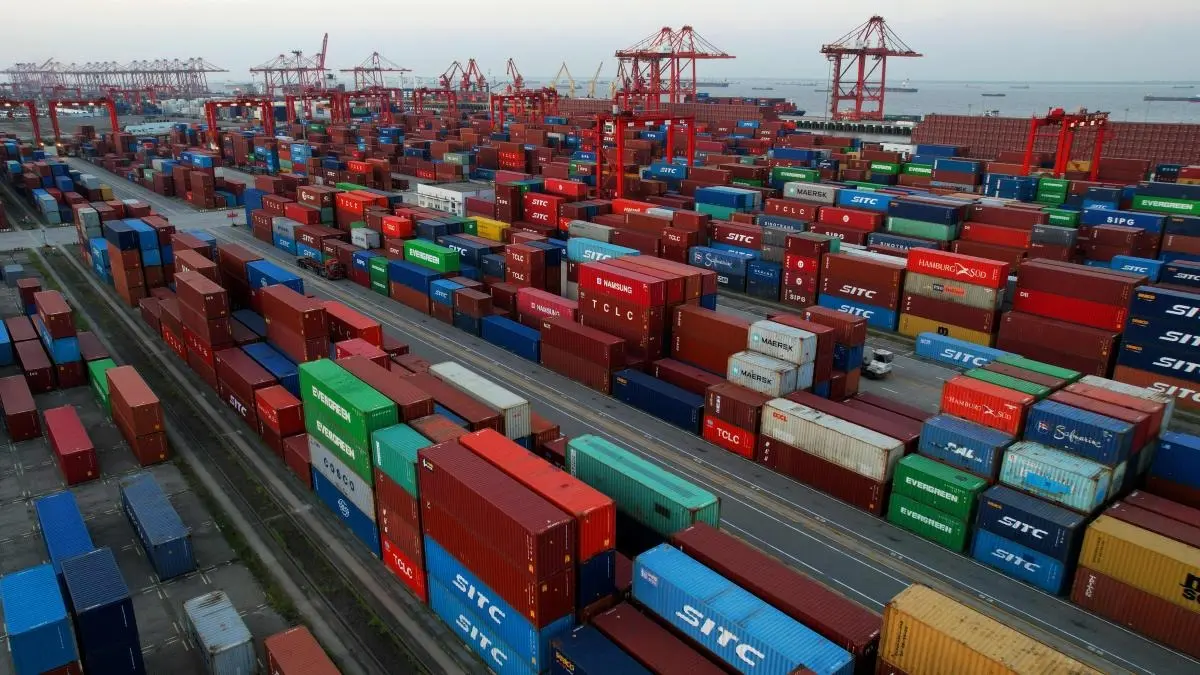Updated 5 April 2025 at 19:58 IST
Tariffs Explained: What They Are, Why They Matter, and Why Trump’s New Plan Is a Big Deal
Historically, tariffs were the main way the US govt. made money. From the colonial era up to the early 1900s, tariffs funded most of Washington’s operations.
- World News
- 4 min read

At its most basic, a tariff is a tax that the government puts on goods coming into a country — imports. For example, when a container ship arrives at a U.S. port carrying items like cars, clothing, or food, the importer pays a tax to get those goods through customs. This tax is the tariff — also known as an import duty.
Until recently, tariffs in the U.S. were quite low. In 2017, the average tariff rate was just 1.5%. That number crept up during Donald Trump ’s first term to about 3%, and now, in his current term, newly announced policies are expected to raise the average tariff to 22.5%, according to the Yale Budget Lab.
How the U.S. Used Tariffs in the Past
Historically, tariffs were the main way the US government made money. From the colonial era up to the early 1900s, tariffs funded most of Washington’s operations. They were relatively easy to enforce: ships came into port, goods were inspected, and taxes were collected on the spot.

This made sense before the government had tools like the income tax, which didn’t become legal until the 16th Amendment was passed in 1913. Early American politicians also believed tariffs could help protect young U.S. industries from competition with more advanced European economies — similar to how Japan and South Korea used protectionist policies in the 20th century to grow their own industries. Alexander Hamilton, one of America's founding fathers, laid out his view on the subject, in his book - Report on Manufacturers.
Advertisement
Why Tariffs Fell Out of Favor
Even though tariffs once powered the government’s budget, they came with serious downsides:
- They hurt U.S. exporters by inviting retaliation. When America taxed foreign goods, other countries responded with their own tariffs, making it harder for American farmers and manufacturers to sell abroad.
- They hit the poor hardest. Lower-income households spend more of their money on everyday essentials, so rising prices from import taxes hurt them more than the wealthy.
- They didn’t raise enough money. At their peak, tariffs brought in about 1.1% of GDP . Today, government spending is around 23% of GDP, funding programs like Medicare, Social Security, and the military. Tariffs simply couldn’t keep up.
- They distorted the economy. Businesses often spent more time lobbying the government for protection through tariffs than trying to improve their products or cut costs.
When the global economy took a dive in 1930, the U.S. passed the infamous Smoot-Hawley Act, raising tariffs in an effort to protect domestic jobs. Many economists believe this move helped turn a bad recession into the Great Depression. After that, countries began slowly lowering trade barriers, hoping to promote peace and prosperity through economic cooperation.
Advertisement
Trump’s New Tariff Push: What’s Different This Time
During his first term, Trump used existing trade laws to raise tariffs on certain products or countries — usually on the grounds of national security or unfair trade practices. Those moves came with legal limitations and offered companies ways to ask for exemptions. The impact was noticeable, but manageable.

This time is different. Trump is now using an emergency authority — one that no other president has used for tariffs — to impose sweeping new import taxes. His plan applies to nearly all goods from every country, not just specific industries or trading partners. If these tariffs stay in place, the average U.S. tariff burden will be the highest it’s been in more than a century — even higher than during the Smoot-Hawley era.
Why Economists (and Markets) Are Worried
The sudden and dramatic nature of these new tariffs has rattled financial markets. Investors fear higher costs for businesses and consumers, slower economic growth, and rising tensions with trading partners. It’s a massive reversal of decades of bipartisan policy aimed at increasing trade and global cooperation.

While supporters argue that tariffs can protect U.S. industries and reduce reliance on foreign countries, critics say they raise prices for American families, invite retaliation, and make the economy less efficient.
The Key Takeaway?
Tariffs have always been a double-edged sword — they can protect, but they can also isolate and harm. What makes the current moment so important is the sheer scale of what President Trump is proposing. If these new tariffs stay in place, they could reshape the U.S. economy in ways we haven’t seen in over 100 years.
Published By : Sagar Kar
Published On: 5 April 2025 at 19:56 IST
